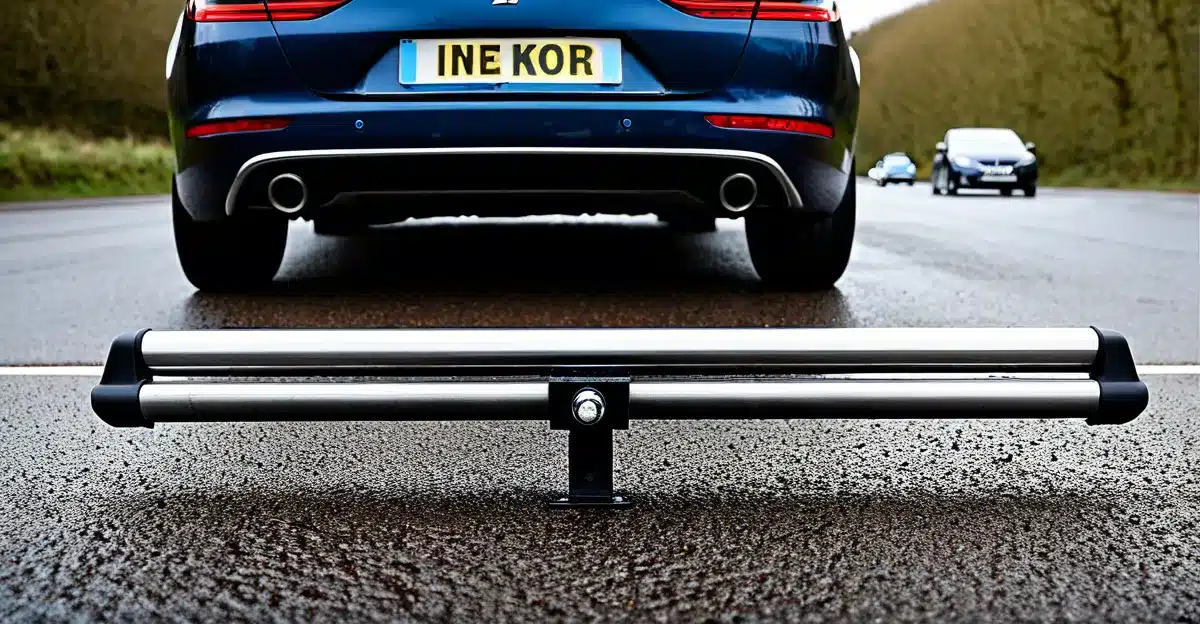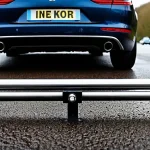Essential UK Legal and Safety Requirements for Tow Bar Installation
Installing a tow bar in the UK demands careful adherence to UK tow bar laws, which ensure both safety and legal compliance. The UK has strict legal requirements governing tow bar installation to prevent accidents and liability issues. Before installation, it is vital to check that the tow bar meets British Standards, such as BS AU 114, which certifies quality and strength.
Safety guidelines emphasize that the tow bar must be properly matched to the vehicle’s make and model, with suitable load capacity to avoid mechanical failure or road hazards. A thorough check of the vehicle’s chassis integrity and electrical connections for trailer lights must also be performed before fitting. Improper installation can compromise braking systems, vehicle control, and may invalidate insurance.
Also read : Exploring the 2023 uk autonomous vehicle regulations: must-know insights you can’t overlook
Failure to comply with UK tow bar laws carries significant consequences. Non-compliance may lead to fines, invalid insurance claims, and even prosecution if the fault results in accidents. Road Safety Act and Vehicle Standards set clear standards, and vehicles with illegal or unsafe tow bars risk being stopped by police or failing the MOT. Understanding these legal requirements protects drivers and ensures safer towing experiences on UK roads.
Selecting the Right Tow Bar for Your Vehicle
Understanding compatibility and functionality for safe towing
Topic to read : Discover top-rated anti-theft devices every uk driver should know about
Choosing tow bars UK drivers can rely on involves a clear understanding of vehicle compatibility and tow bar types. Tow bars come mainly in fixed, detachable, and retractable designs, each suited for different towing needs and vehicle types. Fixed tow bars offer permanent installation, best for frequent towing, while detachable tow bars are preferable when you want to maintain vehicle aesthetics without constant use visible. Retractable tow bars slide away and are ideal for those needing occasional towing without sacrificing trunk access.
Compatible tow bars must match your vehicle’s make and model precisely. This ensures secure attachment and aligns with your car’s structure and suspension. Vehicle-specific tow bars consider mounting points and electrical connections unique to each model, avoiding safety risks or damage.
When selecting, assess your vehicle’s towing capacity—both in terms of weight and recommended frequency. Overestimating towing needs can lead to unnecessary expense, while underestimating puts strain on the vehicle. Reliable vehicle-specific tow bars help balance safety and performance, giving you peace of mind on UK roads.
Always confirm the tow bar complies with local regulations and supports your expected towing frequency and load type. These considerations ensure durability and safety during use.
Tools and Preparation Checklist for UK Drivers
Before starting any tow bar installation, having the right tools at hand is crucial for a smooth and safe process. Key tow bar installation tools include a torque wrench to ensure bolts are tightened to the manufacturer’s specifications, socket sets compatible with your vehicle’s fasteners, and screwdrivers for smaller fittings. A drill with appropriate bits may also be necessary if your vehicle requires custom mounting holes.
Following a preparation guide is helpful to avoid overlooking important details. Begin with a thorough pre-installation checklist, which involves inspecting the vehicle’s rear for any damage or corrosion where the tow bar will attach. Confirm the mounting points specified in the vehicle’s manual to ensure compatibility with your chosen tow bar model.
Proper workspace preparation boosts both safety and efficiency. Clear your working area of clutter and position the vehicle on flat ground. Utilize wheel chocks to prevent unintended movement. Wearing safety gloves and eye protection is recommended to guard against sharp edges and debris. By following this checklist and equipping yourself with the right tools, UK drivers can confidently proceed with tow bar installation, minimizing risks and ensuring a reliable attachment.
Step-by-Step Guide to Installing a Tow Bar on UK Vehicles
Installing a tow bar on UK vehicles involves a precise and careful step-by-step tow bar installation process to ensure safety and functionality. Begin by carefully removing vehicle panels and prepping the chassis. This step allows access to mounting points and ensures surfaces are clean and ready for secure fits. Use appropriate tools to avoid damage to the panels or the vehicle’s bodywork.
Next, the main task is attaching the tow bar frame to the vehicle. Position the tow bar firmly against the chassis mounting points and use the supplied bolts to secure it. It’s critical to align the frame correctly to avoid stress during towing.
Finally, applying correct torque settings and securing main components is essential. Follow manufacturer torque specifications precisely to avoid over-tightening or loosening over time. Using a calibrated torque wrench helps achieve accurate tightness, ensuring the tow bar remains secure even under load.
This structured UK vehicle installation method guarantees the tow bar is safely mounted, complies with regulations, and performs reliably. Always consult your vehicle’s specifications and tow bar instructions during installation to meet safety standards and achieve a seamless fit.
Electrical Wiring for UK Tow Bars: Practical Guidance
When fitting a UK tow bar wiring system, selecting the right wiring kit is essential. UK standards require kits that support the full range of trailer lighting: indicators, tail lights, brake lights, and reverse lights. Most kits come with clear connectors designed to plug into your vehicle’s existing electrics without cutting factory wiring, preserving vehicle integrity.
Connecting the electrics involves matching each wire carefully. The indicator wires control the turn signals, while separate wiring handles brake lights and tail lights. It’s crucial to follow the color-coding in the wiring kit’s instructions for precise connections.
Testing is a key step. Use a trailer light tester or a multimeter to verify each signal—indicators should flash in sync with the vehicle’s, while brake lights respond immediately upon pedal pressure. If lights don’t respond correctly, check for loose connections or blown fuses, common wiring issues that can disrupt functionality.
Properly installed UK tow bar wiring ensures safe towing and compliance with road safety laws. For a comprehensive guide on selecting the ideal wiring kit tailored to your vehicle, see the detailed information in the tow bar resources.
Common Pitfalls and Expert Tips for UK Tow Bar Installation
Installing a tow bar can be straightforward, but common pitfalls often trip up UK motorists. One frequent mistake is improper alignment during fitting, which can compromise towing stability and safety. Ensuring the tow bar is correctly positioned according to manufacturer specifications avoids costly errors. Another typical error involves neglecting to check vehicle compatibility; not all cars support every tow bar type, so verifying compatibility beforehand is crucial.
UK expert tips emphasize careful preparation. Start by thoroughly reading the installation manual and using recommended tools. Many drivers overlook torque settings for bolts—too loose or overtightened fittings are safety hazards. Retightening after initial use can prevent detachment or wobbling.
Post-installation, routine maintenance checks are essential. Inspect for rust, corrosion, or any unusual play in the towing hitch, especially after adverse weather or heavy use. Experts advise verifying electrical connections and ensuring that lights and signals function properly, maintaining compliance with UK road regulations.
By anticipating these challenges and following expert solutions, UK drivers can enjoy safer, more reliable towing experiences with their properly installed tow bars.
Understanding Precision and Recall in SQuAD Evaluations
When evaluating models on the Stanford Question Answering Dataset (SQuAD), two crucial metrics come into play: precision and recall. Precision measures the proportion of correctly predicted tokens out of all tokens the model predicted. It is calculated as:
Precision tp / (tp + fp)
Here, tp (true positives) refers to the number of tokens shared between the model’s answer and the correct answer, while fp (false positives) counts tokens predicted by the model but absent from the correct answer.
Recall, meanwhile, focuses on how many of the correct answer’s tokens the model successfully identified. Its formula is:
Recall tp / (tp + fn)
where fn (false negatives) are tokens in the correct answer missing from the prediction.
These metrics complement each other: precision evaluates accuracy, whereas recall assesses completeness. A high precision but low recall indicates the model predicts only a part of the answer confidently but misses other important tokens. Conversely, high recall but low precision means the model predicts many tokens, including incorrect ones.
Understanding and balancing both metrics ensures models perform well in both capturing comprehensive answers and avoiding irrelevant terms, key to optimizing SQuAD evaluation results.


